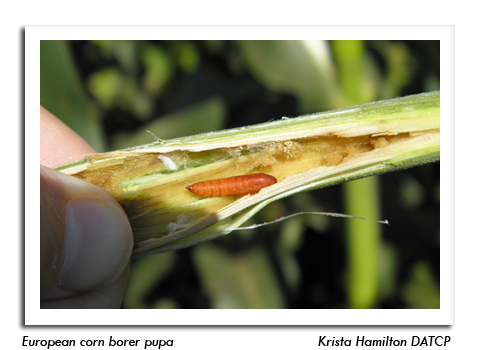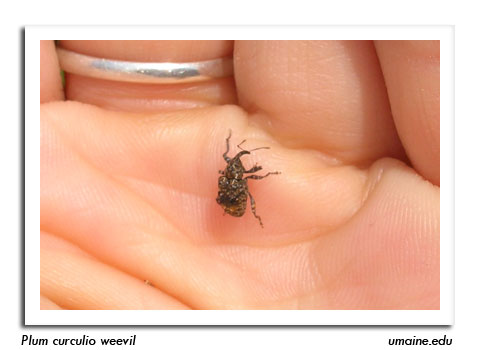
 |
|
|
Looking Ahead
Volume 63 Number 2 Date 05/10/2018 BLACK CUTWORM - Migrants arrived in moderate to high numbers for the second consecutive week. The DATCP network of 46 pheromone traps captured 483 moths from May 3-9, for a cumulative total of 713 moths since flights into the state began on April 12. Egg deposition has intensified on winter annual weeds such as common chickweed, peppergrass and yellow rocket in no-tillage and reduced tillage fields. Based on the first major migration event on April 30 and the expected rapid accumulation of degree days next week, larvae produced by moths of the spring flight could begin cutting corn seedlings by May 19. Black cutworm larvae require 300 growing degree days (modified base 50°F) beyond an intense capture to develop from the egg to plant-cutting fourth instar stage. EUROPEAN CORN BORER - Pupation of overwintered larvae is expected to begin in the next two weeks, as mountain ash flowers. According to the 2017 annual larval abundance survey, populations remain near historic lows and the first flight of moths emerging in June will be extremely small again this year. Black light traps should be installed by May 16 to monitor the spring flight. PLUM CURCULIO - Migration from hibernation sites into apple orchards is underway in locations where mean daytime temperatures have exceeded 60°F for three to four days. Activity is expected to increase sharply in the week ahead. GYPSY MOTH - Larvae began emerging from overwintered egg masses on May 4 in Dane County. Phenological indicators of gypsy moth egg hatch include beginning bloom of eastern redbud and saucer cup magnolia petal fall. Larval emergence can be anticipated next week in central and northern Wisconsin. GRAPE FLEA BEETLE - Adult beetles and bud damage have been reported from Dane and Vernon County vineyards. Biweekly scouting is suggested during bud swell and until shoot growth reaches 2-3 inches. At this time of year, feeding by adult flea beetles damages primary buds, preventing shoot expansion and ultimately reducing grape yields. Plants on the margins of vineyards are at greatest risk of injury. -- Krista Hamilton, DATCP Entomologist 




|
|
|